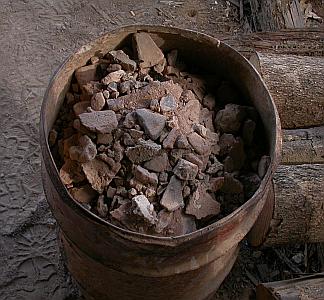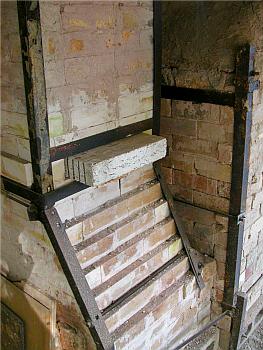![]()
Andrew mainly uses wood from the Australian hardwoods bloodwood, ironbark and red stringybark. Andrew says ´The trouble with the hardwoods I use is that they produce relatively little ash and it is rather dark´. Camphor laurel (Cinnamomum camphora) is native to China and Japan but is exotic to Australia and is a weed tree in this area. Some is used for sidestoking and in the firebox towards the end to get a lighter coloured ash.
To
make the most of the natural ash effects in the area of the throat
next to the main firebox, Andrew uses the clays Clayworks RSF and
Clayworks CBS, but prefers the latter. Pots made from these clays
are frequently refired. Hallam fireclay is used for wads.

The rubble in this drum is used as extra insulation on the lid of the throat. Insulating firebricks are packed on the slabs, then a layer of newspaper, then the this rubble is put on the newspaper.
A complete firing takes about 20 hours. Before sidestoking commences there is a pronounced temperature gradient in the throat, the chamber end being much cooler than the firebox end. The throat is effectively soaked for 10 hours as the chamber is brought up to top temperature. Top temperature is maintained in the chamber for 2 hours. Andrew has occasionally experimented with final stage reduction with natural cooling. The results have been mixed.
During the firing the embers in the firebox are controlled by use of mouseholes and some agitation. Stirring is avoided towards the end of the firing to avoid sandpaper surfaces. Andrew uses a digital pyrometer but ´tries to fire the kiln and not the pyrometer´. He usually stokes when the flame sucks back at the top of the chimney.

Detail of damper made from a cast slab.